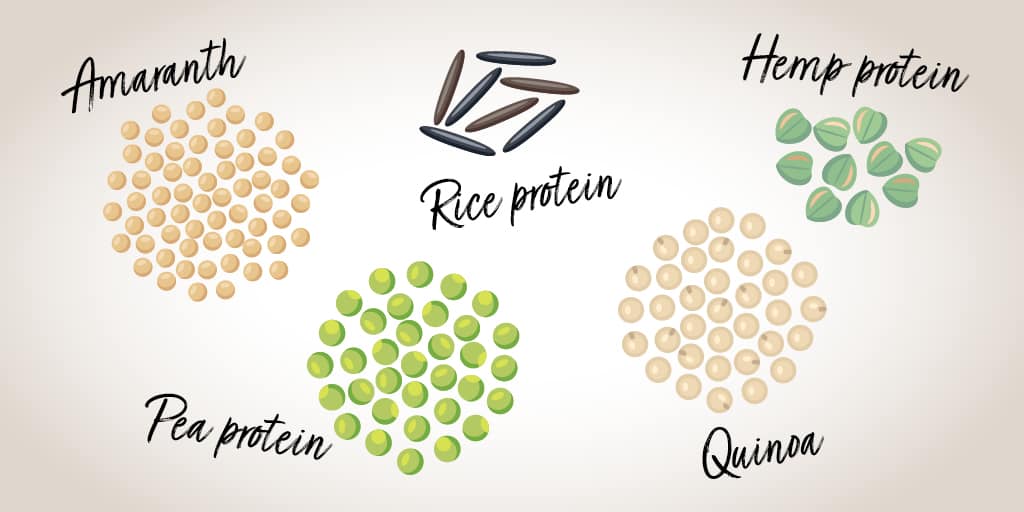Can You Get Complete Protein from Plants?
Eating a more plant-based diet is an exciting endeavour, and there are many reasons why this type of diet is healthy for you and the planet. Whether the motivation is from a Netflix documentary or the desire for more energy and a brighter complexion, people are really taking an interest in eating more plants. In fact, according to a March 2018 poll from Dalhousie University, more than 3 million Canadians consider themselves vegan or vegetarian; that’s nearly 10% of the population! As well, according to Google Canada, plant-based eating was the top searched diet trend in 2019.

Along with eating more fruits and vegetables, plant-based diets give you an opportunity to incorporate more delicious and nutritious forms of plant protein. Here are some tips that can help make sure you are getting the protein you need while making the transition to plant-based eating:
1. Start with a Plan that’s Best for You:
Whether it’s going vegan overnight or eliminating red meat in the first week followed by removing poultry and fish, follow a schedule that works best for you.
2. Make Simple Meals with Lots of Variety:
When deciding to eliminate animal-based foods, recipes can become elaborate – especially if you are trying to make your own plant-based cheese, meat, or milk alternatives from scratch. Instead of overcomplicating things, go back to the basics and choose whole grains and starches (e.g., brown rice, quinoa, buckwheat, millet, squash, and sweet potato), legumes (e.g., fresh peas and beans, peanuts, and soybeans), and pulses (e.g., dried beans, lentils, and chickpeas) to go alongside vegetables. Switch these around regularly and use a variety of herbs and spices to create different flavours.
3. Start your Meals with Vegetables:
Putting vegetables centre stage can help you get the nutrients and fibre you need. If you find you aren’t feeling full, start your meals with a salad, such as a green salad with an antioxidant rainbow of veggies (e.g., peppers, tomatoes, avocado, shredded beet, and carrot). Add your favourite dressing and sprinkle with seeds, such as pumpkin, sunflower, and chia.
4. Snack on Berries:
Berries are full of phytonutrients, including antioxidants, and are high in fibre and vitamin C. Many, such as blueberries and raspberries, have a low glycemic index, which means they won’t spike blood sugar and cause a subsequent drop later on.
5. Get a Plant Protein Punch:
Our bodies require.8–1.2 g of protein per kilogram of body weight per day. But when you are limiting animal-based proteins, it can sometimes prove difficult to reach the recommended daily amount. Protein supplements sourced from organic, fermented, vegan proteins are a good option because when fermented, they are much less likely to cause any digestive upset. When combined with fermented fruits and veggies, these supplements can act as a prebiotic for your good bacteria. Protein supplements are easy to incorporate into your routine, starting with a breakfast smoothie, but make sure to read the labels and watch for cheap fillers. Look for a powder packed with phytonutrients where you can get 20 g of protein per serving, along with greens and immune-supporting medicinal mushrooms.
6. Supplement as Needed:
It is important to know that several vitamins and minerals can be harder to obtain in a plant-based diet. Vitamin B12, iron, and vitamin D are three to initially be aware of. Here are some tips for supplements:
- Select the methylcobalamin form of vitamin B12 that is taken sublingually (under your tongue).
- Choose an iron that is non-constipating, such as iron bisglycinate.
- Look for a vegan vitamin D3 from lichen, as most are sourced from lanolin or fish.
Remember to avoid refined sugars, drink enough water, and read nutritional labels. It’s said that it takes 21 days to create a new habit – if you master the first three weeks, you will likely succeed and enjoy your new way of eating!
.png)